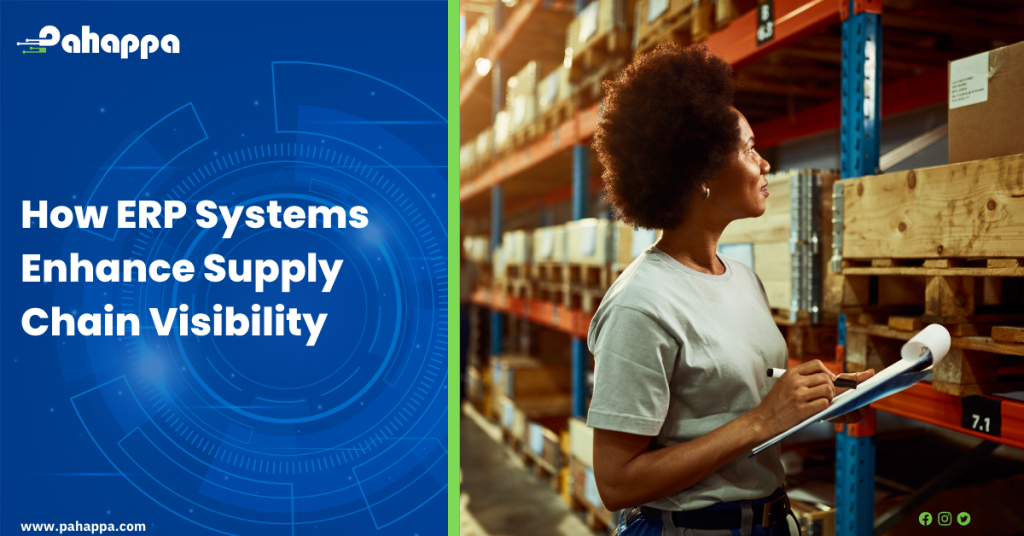Supply chain visibility is the ability to track different goods and/or products in transit, giving a clear view of the inventory and activity. Supply chain visibility is mainly found in companies or organisations with inventory departments. Wholesale or retail stores, e-commerce businesses or any other business selling a product or products use supply chain management to manage the inventory that is coming into the business. Supply chain visibility controls inventory coming in and out of the business by controlling costs of shipment, transit and production of supply.
In an ERP supply chain visibility can help reduce risks by giving insights into how your supply works. Enterprise Resource Planning (ERP) systems can enhance supply chain visibility in several ways, including:
- Centralized data management: ERP systems provide a centralized platform for managing all supply chain-related data, including inventory levels, purchase orders, sales orders, and shipping information. This enables all stakeholders in the supply chain to access real-time data and make informed decisions based on accurate and up-to-date information.
- Improved communication and collaboration: ERP systems enable seamless communication and collaboration between different departments and stakeholders in the supply chain, including suppliers, manufacturers, distributors, and retailers. This enables better coordination and alignment of activities, resulting in faster and more efficient supply chain operations.
- Real-time tracking and monitoring: ERP systems allow real-time tracking and monitoring of inventory levels, orders, and shipments throughout the supply chain. Through this, an ERP can track a product right from production to shipping and the actual costs of those products until they reach the customer. This helps identify potential bottlenecks and delays in the supply chain and enables quick corrective action to be taken to prevent or minimize disruptions.
- Better forecasting and planning: ERP systems can generate accurate forecasts and demand planning based on historical data and trends. This comes in handy especially if the company need to deal with the production costs of the product. They can know which raw materials would be missing at a certain date. This helps optimize inventory levels and reduce the risk of stockouts or excess inventory, resulting in lower costs and improved customer satisfaction.
- Enhanced analytics and reporting: ERP systems provide advanced analytics and reporting capabilities that enable supply chain managers to monitor key performance indicators (KPIs) and identify opportunities for improvement. This helps optimize supply chain performance and drive continuous improvement.
ERPs are a combination of different systems that combine into one system. With this centralised system, different concerned departments can view and analyse the supply chain in the inventory system which would enable better decision-making. To know more about ERPs and how they can improve inventory tracking, click here.











